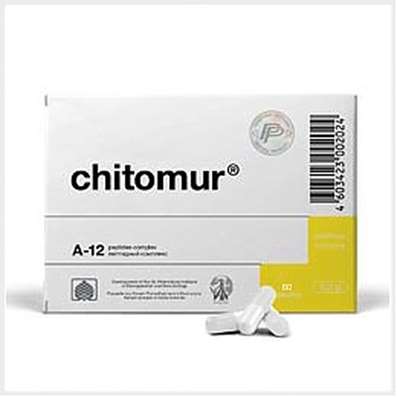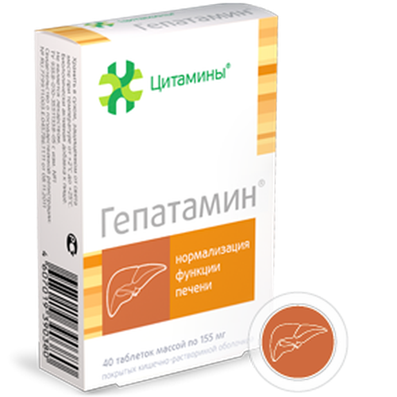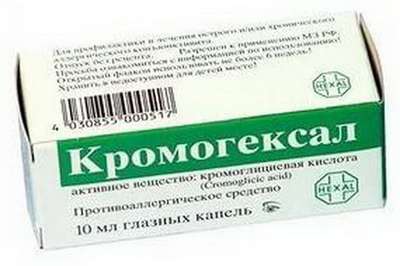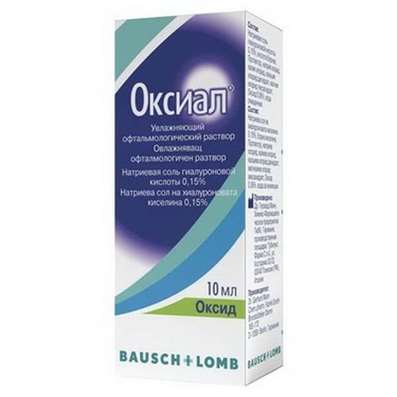Instruction for use: Pilotymol
I want this, give me price
Active substance: Pilocarpine + Timolol
ATX Code S01EB51 pilocarpine in combination with other drugs
Pharmacotherapeutic group:
Beta-blockers in combination
m-Holinomimetiki in combinations
Ophthalmic agents in combination
The nosological classification (ICD-10)
H40.0 Suspected glaucoma
Marked rise in intraocular pressure, Hypertension eyes, ocular hypertension, Measurement of intraocular pressure, ophthalmohypertension, Elevated IOP, Elevated intraocular pressure, Elevated intraocular pressure in infectious diseases of the eye, Povyshennore intraocular pressure, Increased ophthalmotonus, Spontaneous blockade angle opposite eye, Narrow chamber angle, Iatrogenic, blockade angle opposite eye
H40.1 Primary open-angle glaucoma
open-angle glaucoma, Open-angle glaucoma, Primary glaucoma, pseudoexfoliation glaucoma, Elevated IOP
H40.2 Primary angle-closure glaucoma
closure Glaucoma, Glaucoma with a narrow angle of anterior chamber, Angle-closure glaucoma, Acute angle-closure glaucoma, An acute attack of angle-closure glaucoma, Elevated intraocular pressure angle-closure glaucoma, Chronic angle-closure glaucoma
H40.3 Glaucoma secondary posttraumatic
Post-traumatic secondary glaucoma, Glaucoma after cataract operated
H40.4 Glaucoma secondary to inflammatory diseases of the eye
Glaucoma uveal, Uveal secondary glaucoma
H40.5 Glaucoma secondary to other eye diseases
The secondary open-angle glaucoma, Glaucoma afakicheskaya, Secondary glaucoma
Composition
Eye drops 1 ml
timolol (in the form of maleate) 5 mg
pilocarpine hydrochloride 20 mg
Excipients: benzalkonium chloride; sodium citrate for injection; lemon acid; hydroxypropyl methylcellulose (hypromellose); water for injections
Patients - droppers of polymeric material in 5 ml; In the paper cartons 1 vial - dropper.
Pilotimol® mini
Eye drops 1 ml
timolol (in the form of maleate) 5 mg
pilocarpine hydrochloride 10 mg
Excipients: benzalkonium chloride; sodium citrate; lemon acid; hydroxypropyl methylcellulose (hypromellose); sodium chloride; water for injections
Patients - droppers of polymeric material in 5 ml; In the paper cartons 1 vial - dropper.
The drug forms
Transparent or slightly opalescent, colorless or slightly colored liquid.
Characteristic
Antiglaucoma drug.
pharmachologic effect
antiglaucoma.
pharmacodynamics
Pilocarpine - cholinergic agent, stimulating m-cholinergic receptors. With instillation in pilocarpine eye causes cramps and spasm of accommodation, lowers intraocular pressure. Reduction of intraocular pressure reduction caused by the ciliary muscles and the muscles of the iris, which leads to the expansion of the anterior chamber angle and changes the physical structure of the trabecular tissue, thereby facilitating the outflow of aqueous humor. Action pilocarpine begins after 30-40 minutes, reaching a peak after 1.5-2 hours and lasts from 4 to 14 hours.
Timolol - a beta-blocker, which prevents the binding of neurotransmitters to sympathomimetic β1- and .beta.2-adrenergic receptors. It lowers intraocular pressure by reducing aqueous humor production. Localization timolol actions aimed at β2-adrenergic receptors in the ciliary body. Penetrating into the systemic circulation by absorption through the mucous membrane of the eyes, nose and lacrimal tract, can cause systemic effects typical of beta-blockers. Action manifests timolol 20 min after instillation, reaching a maximum after 1-2 hours and lasts up to 24 hours.
When combined in a single formulation of pilocarpine and timolol mutually reinforce each other's action.
Pharmacokinetics
Suction
Pilocarpine well penetrates into the cornea. Cmax of pilocarpine in the aqueous humor reaches its maximum after 30 minutes.
Timolol maleate is rapidly penetrates the cornea of the eye tissue. Cmax of timolol in the aqueous humor is reached in 1-2 hours.
Distribution
Pilocarpine associated in many ocular tissues, prolonging T1 / 2 of the eye. Instillation in the conjunctival sac does not penetrate into the systemic circulation.
Timolol in a small amount enters the systemic circulation by absorption through the conjunctiva, lacrimal and the nasal mucous tract.
Metabolism
Pilocarpine is not metabolized in the aqueous humor, and stands out with her. Timolol is extensively metabolized in the liver.
breeding
T1 / 2 of pilocarpine from the eye - from 1.5 to 2.5 hours, however, decreasing of intraocular pressure effect lasts for several hours..
Timolol is excreted in the urine unchanged and as inactive metabolites. T1 / 2 of timolol - 4 hours.
Reduce the formation of intraocular fluid, timolol reduces the rate of excretion of pilocarpine from the eye.
Pharmacokinetics in special clinical situations
In infants and young children timolol concentration significantly exceeds its maximum concentration in plasma of adults.
Indications
Primary open-angle glaucoma;
secondary glaucoma (including uveal, afakicheskaya, posttraumatic);
angle-closure glaucoma (in combination with miotikami);
increased intraocular pressure after ophthalmic surgery.
Contraindications
Hypersensitivity to the drug;
bronchial asthma;
sinus bradycardia (heart rate <50 beats / min.);
AV blockade II-III degree;
decompensated heart failure;
cardiogenic shock;
severe corneal dystrophy;
iritis;
iridocyclitis;
rhinitis;
COPD;
childhood.
Carefully:
retinal disinsertion;
cerebrovascular disorders;
diabetes;
hyperthyroidism;
hypoglycemia;
oral intake of beta-blockers;
before surgery under general anesthesia.
Pregnancy and breast-feeding
Use of the drug during pregnancy is possible only when the intended benefits to the mother outweighs the potential risk to the fetus.
If necessary, use during lactation should decide the issue of termination of breastfeeding.
Side effects
From the side of view: local reactions - hyperemia of the eyelid skin, burning and itching in the eyes, eye pain, spasm of the ciliary muscle, induced myopia, conjunctival hyperemia, tearing or decrease lacrimation, photophobia, decreased visual acuity in low light, swelling of the corneal epithelium, short break in visual acuity; blepharitis, conjunctivitis; long-term use may develop superficial keratopathy point (decrease the transparency of the cornea), decreased corneal sensitivity, ptosis, cataract, "dry eye" syndrome; rarely - diplopia, rigidity of the iris, the iris cyst, retinal detachment.
From the central and peripheral nervous system: paresthesia, dizziness, headache, drowsiness, depression; hallucinations, confusion.
Cardio-vascular system: decrease in blood pressure, bradycardia, bradyarrhythmia, AV block, heart failure, heart failure, transient ischemic attack, collapse.
The respiratory system: rhinitis, nasal congestion, epistaxis, dyspnea, bronchospasm, pulmonary insufficiency.
From the digestive system: nausea, vomiting, diarrhea.
From the reproductive system: sexual dysfunction, decreased potency.
Allergic reactions: urticaria.
Other: muscle weakness; with prolonged use - increased sweating, fatigue.
Interaction
In an application Pilotymola® and Pilotymola® mini with BPC or cardiac glycosides - may impair AV conduction, acute left ventricular failure or hypotension.
The combined use of drugs with Pilotiymola® violating deposit catecholamines (reserpine) contributes to the development of arterial hypotension (including orthostatic), bradycardia, and dizziness.
Simultaneous application Pilotymola® with beta-blockers systemic action results in a strengthening of pharmacological effect.
Dosing and Administration
Kongungualno. The drug instilled in the affected eye one drop at 2 times per day.
Evaluation of therapy should include measurement of intraocular pressure after approximately 4 weeks after starting treatment.
Overdose
Symptoms: bradycardia, decreased blood pressure, bronchospasm, acute cardiac insufficiency.
Treatment: mainly symptomatic. Atropine may be used as an antidote to pilocarpine. Isoprenaline can be administered in / in to correct severe bradycardia or bronchospasm; dobutamine - for the treatment of arterial hypotension.
special instructions
Before treatment and Pilotymolom® Pilotymolom® mini cancel other antiglaucoma drugs. Measurement of intraocular pressure is carried out at different times of the day. With long-term appointment may develop resistance to the drug.
Eye drops and Pilotymol® Pilotymol® mini contain a preservative benzalkonium chloride, so they are not recommended for use while wearing contact lenses. Before using the product, remove contact lenses and install them again no earlier than 15 minutes.
Effects on ability to drive vehicles and management mechanisms
Use caution when driving at night or when working in low light.
Storage condition
In the dark place at a temperature of 2-15 ° C. Opened vials - at room t (below 25 ° C), protected from light.
Keep out of the reach of children.
Shelf-life
eye drops 10 mg + 5 mg / ml 10 mg + 5 - 2 years. After opening the bottle - 1 month.
eye drops 20 mg + 5 mg / ml 20 mg 5 + - 3 years. After opening the bottle - 1 month.
Do not use beyond the expiration date printed on the package.

 Cart
Cart





